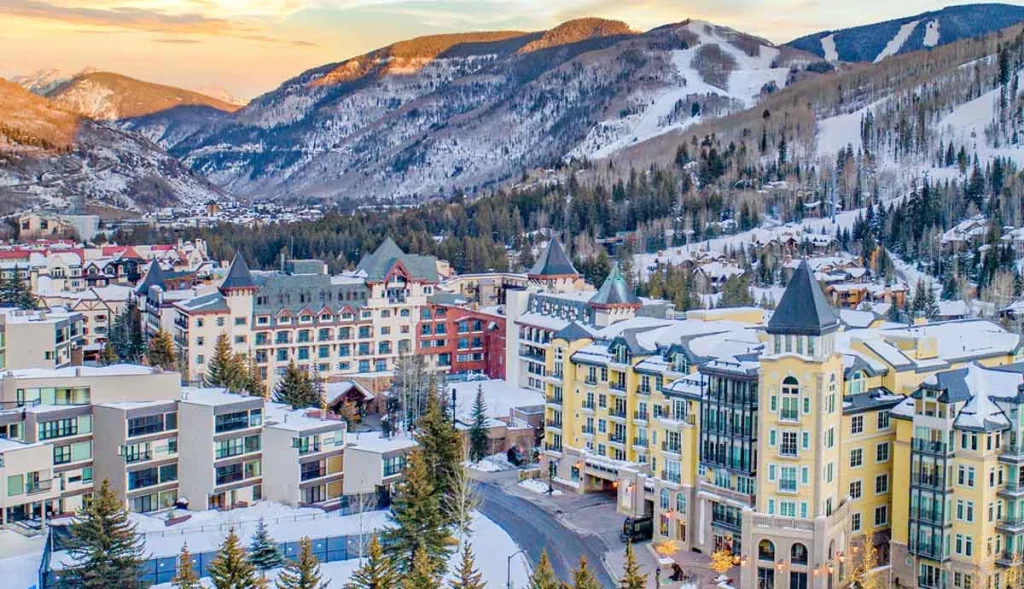Introduction
The Rocky Mountains, stretching over 3,000 miles through North America, are one of the most breathtaking natural wonders in the world. From the high peaks of Colorado to the expansive forests of Wyoming, the Rockies offer an unparalleled combination of outdoor adventure, scenic beauty, and cultural experiences. For anyone planning a trip to the Rocky Mountains, there are essential tips to ensure a safe, enjoyable, and memorable journey.
Whether you are embarking on a hiking adventure, seeking out the best ski resorts, or simply exploring charming mountain towns, the Rockies have something for everyone. However, the region is vast and diverse, which can make planning a trip feel overwhelming. Understanding what to expect, when to visit, and how to prepare will make all the difference in your experience.
In this detailed travel guide, we will provide a wealth of tips for exploring the Rocky Mountains, from preparing for your trip to the essentials for navigating the terrain and maximizing your enjoyment. Our goal is to provide you with the insights needed to make the most of your time in this iconic mountain range.
1. Best Time to Visit the Rocky Mountains
The Rockies offer different experiences depending on the season, and choosing the right time to visit is essential for having the best experience. Here we will explore:
- Summer (June – September): Ideal for hiking, mountain biking, camping, and exploring national parks such as Rocky Mountain National Park in Colorado, Grand Teton National Park in Wyoming, and Banff National Park in Canada.
- Fall (September – November): The fall season offers stunning foliage and fewer crowds, but temperatures can drop, especially in the higher elevations.
- Winter (December – February): This is the peak ski season, with famous resorts like Vail, Aspen, and Jackson Hole drawing winter sports enthusiasts.
- Spring (March – May): Spring brings fewer crowds but still offers great skiing at higher elevations, while the lower areas begin to bloom.
2. Packing Essentials for the Rocky Mountains
When traveling to the Rockies, packing the right gear is crucial, especially since the weather can change rapidly at higher altitudes. A good packing list should include:
- Layered Clothing: The weather can fluctuate, so packing layers is key. Be sure to have moisture-wicking base layers, insulating mid-layers, and waterproof outer layers.
- Footwear: Proper hiking boots are essential for trekking, especially in rugged terrain. If skiing, ensure your gear is up to date and suited to your skill level.
- Daypack: For daily hikes, a small, comfortable backpack with hydration capability and snacks is essential.
- Sunscreen & Sunglasses: The sun can be intense in the mountains, so sunscreen and UV-blocking sunglasses are must-haves.
- Navigation Tools: Whether using a traditional map or a GPS device, knowing how to navigate in the wilderness is critical.
3. Transportation: Getting Around the Rocky Mountains
The Rocky Mountains span multiple states and provinces, so planning your transportation is essential for a smooth trip:
- Car Rentals: Renting a car is the best way to explore the Rockies. Ensure that your vehicle is equipped for mountain driving, especially if you’re venturing into remote areas.
- Driving Tips: Mountain driving presents unique challenges, such as steep roads, winding curves, and changing weather conditions. Make sure to check road conditions ahead of time.
- Public Transit: While public transportation options exist in major cities and towns near the Rockies, most areas require private vehicles to access remote or rural locations.
- Guided Tours: For a more relaxed experience, consider guided tours, especially if you’re interested in scenic drives, such as the Going-to-the-Sun Road in Glacier National Park.
4. Outdoor Activities and Adventures
The Rocky Mountains are a haven for outdoor enthusiasts, offering a diverse range of activities. Here are some popular activities to consider:
- Hiking: The Rockies are home to thousands of miles of hiking trails, from easy walks to challenging summit climbs. We’ll cover famous hikes like the Longs Peak hike in Colorado and the Cascade Canyon Trail in Grand Teton National Park.
- Wildlife Watching: The Rockies boast a variety of wildlife, including elk, moose, bighorn sheep, and black bears. Knowing where and when to observe animals safely is key.
- Fishing and Boating: With an abundance of lakes, rivers, and streams, the Rockies offer excellent opportunities for fishing, kayaking, and canoeing.
- Skiing and Snowboarding: During the winter months, world-class ski resorts like Aspen, Breckenridge, and Whistler offer skiing and snowboarding experiences for all levels.
- Rock Climbing and Mountaineering: For adventure seekers, the Rockies offer both technical rock climbing and mountaineering expeditions, including guided climbs of the 14ers (peaks over 14,000 feet) in Colorado.

5. Top Destinations in the Rocky Mountains
While the entire mountain range offers breathtaking views and opportunities for adventure, certain destinations stand out for their unique features:
- Rocky Mountain National Park (Colorado): Famous for its alpine lakes, dramatic mountain peaks, and diverse wildlife.
- Banff and Jasper National Parks (Canada): Located in the Canadian Rockies, these parks are known for their stunning glacial lakes, mountainous scenery, and world-class skiing.
- Grand Teton National Park (Wyoming): Known for its dramatic Teton Range and pristine lakes, offering excellent hiking and scenic drives.
- Glacier National Park (Montana): A haven for those looking to experience rugged wilderness, wildflowers, and stunning glaciers.
- Vail and Aspen (Colorado): Premier ski resorts that also offer activities such as shopping, dining, and cultural experiences during the off-season.
6. Safety Tips for Outdoor Exploration
Exploring the Rockies requires proper preparation to ensure your safety. Essential tips include:
- Know Your Limits: Whether you’re hiking, climbing, or skiing, always be aware of your physical limitations and do not push beyond them.
- Weather Awareness: The weather in the Rockies can change suddenly, especially at higher elevations. Carry a weather radio and always check forecasts before heading out.
- Know the Wildlife: Many animals in the Rockies, such as bears and mountain lions, can be dangerous. Learn how to safely observe and avoid wildlife encounters.
- First Aid and Emergency Contacts: Carry a first aid kit, know basic first-aid techniques, and have emergency contact numbers in case of an accident.
- Acclimatization: If you’re coming from lower altitudes, give your body time to adjust to the thinner air to avoid altitude sickness.
7. Cultural Practices and Local Communities
The Rocky Mountains are home to numerous Indigenous groups, including the Navajo, Ute, Shoshone, and many others. These communities have a rich history and culture tied to the land. Visitors can learn about their heritage through museums, cultural centers, and guided tours. Understanding and respecting these cultures enhances the travel experience.
- Cultural Centers and Museums: Visit the Museum of the Mountain Man in Pinedale, Wyoming, or the Native American heritage sites in Colorado to learn more about the region’s history.
- Native American Reservations: Consider visiting reservations in the region to learn about Indigenous cultures, art, and traditions.
8. Where to Stay: Accommodations in the Rockies
Whether you’re camping under the stars, staying in a cozy mountain lodge, or indulging in luxury resorts, there’s no shortage of accommodation options in the Rockies. Here are some types of accommodations to consider:
- Camping: National parks and forests offer a variety of campgrounds, including backcountry campsites for those who seek solitude.
- Cabins and Lodges: Cozy mountain cabins and lodges offer a more rustic experience, often with scenic views and proximity to outdoor activities.
- Resorts: For those seeking luxury, resorts in Aspen, Vail, and Jackson Hole offer world-class amenities, including spas, fine dining, and private guided tours.
Conclusion
Traveling to the Rocky Mountains is an experience of a lifetime, and following these essential travel tips will ensure a safe, enjoyable, and memorable trip. By choosing the right time to visit, packing smartly, and immersing yourself in the region’s natural beauty and outdoor adventures, you’ll be well-prepared to explore the Rockies to the fullest. Whether you’re hiking to a mountain summit, skiing on a world-class resort, or simply soaking in the scenery, the Rocky Mountains promise an unforgettable journey.





















